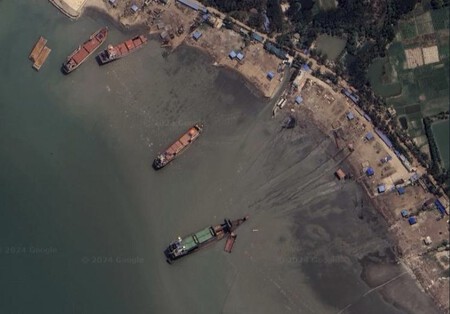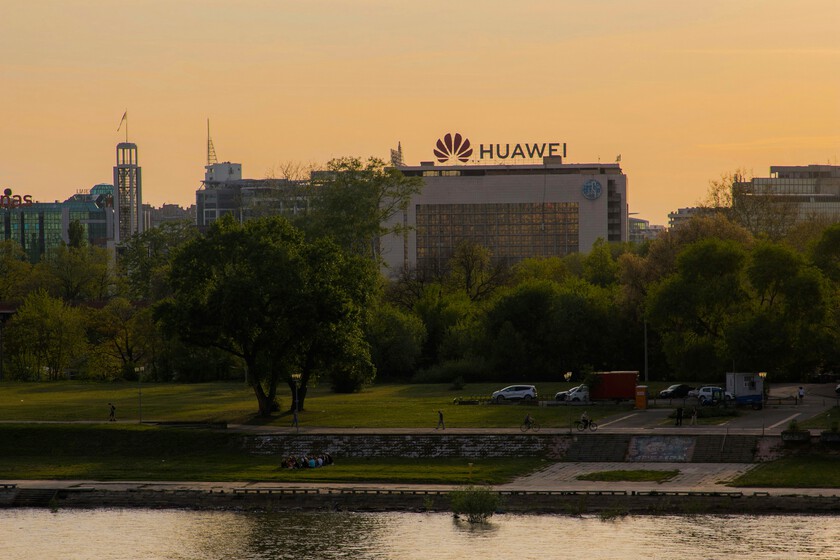Every year, dozens of ships reach the end of their useful lives. The companies that operate them have two alternatives: get them ready to modernize them or send them to scrap. Those shipyards where they dismantle ships are mainly located on Asian coasts, and a process that should be green because a large percentage of the ship is recycled, sometimes becomes something tremendously complex.
The reason is that there are shipyards where ship parts are worth a lot, but the lives of the workers and the environment are worthless. And one of the most criticized is the Chittagong shipyard, in Bangladesh.
Recycling boats. It may seem that recycling a ship weighing hundreds of thousands of tons is a complex process, but the steps are actually well defined to make it as simple as possible (since, obviously, we are talking about a mass of steel). The first thing is to place the ship in a dry dock and remove complex components such as fuel (to avoid fires), oil, chemicals or wastewater.
Doing it in a dry dock ensures that, even if there are leaks, the contaminating elements do not leak into the sand or the sea. The second thing is to remove the electronic elements, motors and generators that can be sold or reused. The next thing is to cut the boat as if it were a cut: in portions while the materials are classified. And the last step is to sell or recycle the steel, copper, aluminum and wood pieces and properly manage non-recyclable waste.
Chittagong. These processes have been refined over the years to comply with international regulations and comply with environmental commitments. And, with that said, we must travel to the coast of Bangladesh, specifically to the Chittagong shipyard. It all started in the mid-60s, when some boats were stranded on the beach and dismantled. In the 1980s, the shipbreaking industry grew in the country and Chittagong became the largest shipbreaking yard in the world.
AFFORDABLE. As The Guardian points out, this shipyard recycled more than 230 ships in one year, which represented more than 10 million tons of steel. Muhammed Ali Shahin is the coordinator of the Shipbreaking Platform, a platform that seeks to ensure that Bangladesh shipyards comply with human and environmental safety standards, and comments that “Chittagong is the cheapest place to break targets, but the Price is suffering.”


human riding arena. Muhammed commented that in 2017 alone nine men died in Chittagong and no one was held responsible for those deaths, adding to the 200 in the last ten years. In a 2012 article, he commented that “on average, one worker dies a week, and every day someone is injured. Workers are easily replaceable and those responsible know that if they lose one, another 10 are waiting to replace them.”
Ali Shahin points directly at the government, since they are the ones who collect taxes for the activity carried out in the shipyard and, therefore, he turns a blind eye. It is not only deaths, we have not finished with that issue, but also the ailments that employees have due to the lack of technical equipment necessary to deal with harmful substances both from the interiors of the ships (fuel, insulation) and waste. that occur when, for example, cutting steel.
In this table, we can see that, of a sample of 216 people, the vast majority have muscle problems, extreme fatigue due to long hours, respiratory and eye problems, among others.


Too many controversies. The shipyard employs hundreds of thousands of people in the area, many of them are… children. Although it is illegal to employ children and adolescents in hazardous industries under the Bangladesh Labor Law, a 2019 study found that at least 13% of workers in Chittagong were under 18 years of age. He states that, to avoid inspections, the work they do is on the night shift and it is an age range that is especially vulnerable to the toxic conditions of the scrapyard environment.
Most of them work as assistants to steel cutters, but also removing pieces of the ship that have fallen into the sea from the mud. If something happens and there is an accident, since they are not legally hired, no one takes charge of the matter. Not to mention the stories of bodies of people who die due to work accidents and are thrown directly into the sea.


Picardy. Apart from the human chopper, Chittagong is accumulating controversies due to the dumping of hazardous waste that is polluting the surroundings. This is due to the lack of resources, but also to the most important thing: the dismantling process is not done in a dry dock, but directly on the sand of the beach, so any waste falls directly into the sand and the sea.
The Guardian article states that European Union laws prohibit ships flying that flag from being scrapped on Asian beaches, but the ‘reflagging’ process is simple. There are also complaints about companies that know perfectly well in which shipyards their ships will be dismantled and, even so, sell them to intermediaries who are responsible for reselling them to the shipyards.
Not all shipyards. It must be clarified that, especially since the signing of the Hong Kong Convention in 2009, dozens of shipyards have made efforts to make working conditions more humane and, also, to make the facilities suitable for practice. of ship breaking. Countries like Japan, India and Türkiye, where the huge Aliaga shipyard is located, have invested hundreds of millions of dollars to catch up.


A shipyard in dry dock


A few kilometers away, another one in the sand
In Bangladesh, everything moves slower and only PHP Shipbreaking meets international standards. The reason is that it is a depressed area that employs thousands of people and is a benefit both for the shipyard and for the companies that sell the boats to those shipyards that do not comply with the regulations.
By the way, and in case the photos of unprotected workers are not illustrative enough, there is a segment of a blockbuster that portrays how apocalyptic the area is.


Still from ‘Avengers: Age of Ultron’
This is the second ‘Avengers’ film, which at one point has a pan of the Chittagong shipyard. And it is something that can be seen in the trailer of the film, at minute 1:31 and that corresponds to the image that we left just above this paragraph.
Images | Stéphane M Grueso, Google Maps, Naquib Hossain (2)
In WorldOfSoftware |











